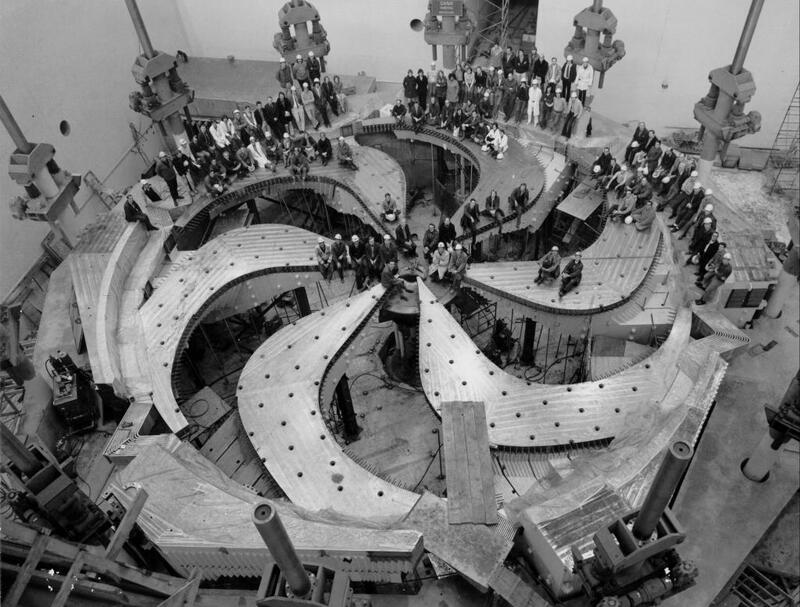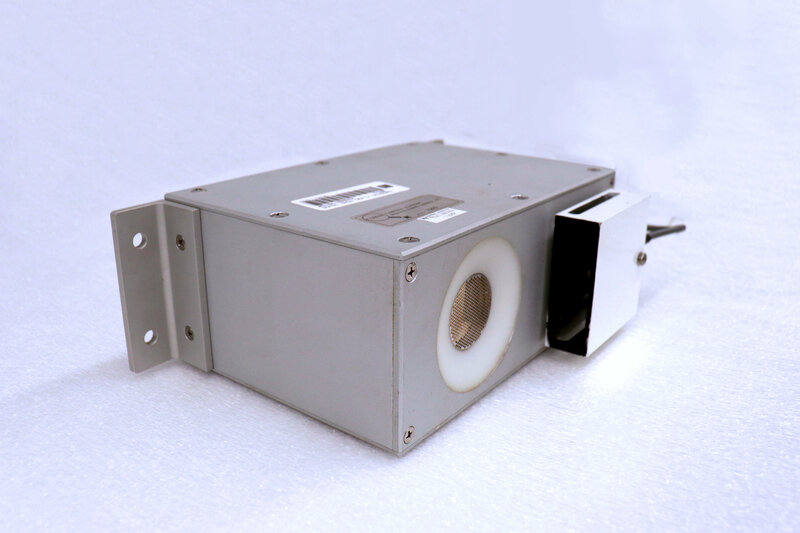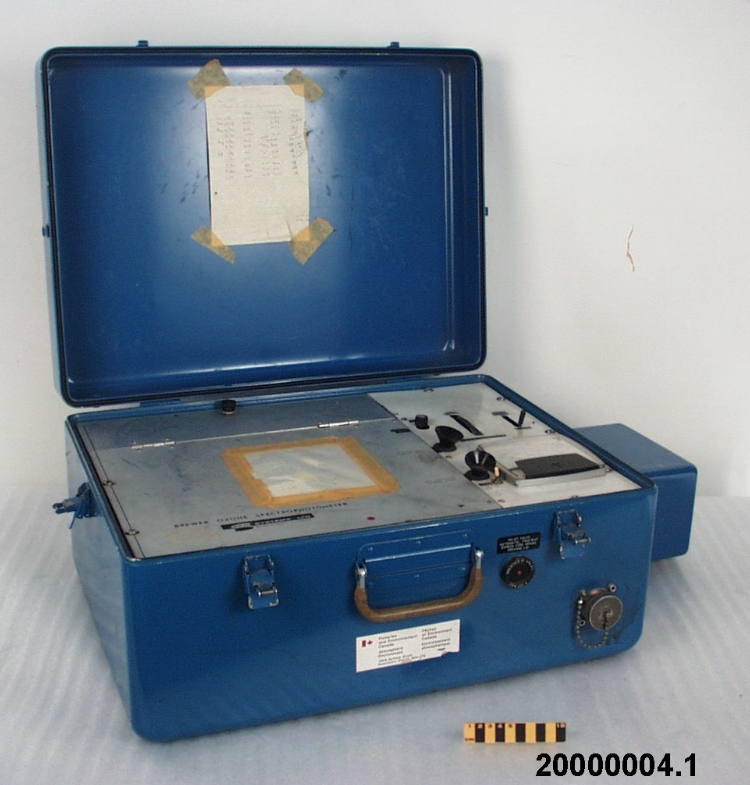Introduction
by Victoria JL Fisher
In the latter half of the twentieth century, Canadian precision manufacturing spread across the country. Seeking affordable and strategic locations, and reflecting policies from all levels of government to either disperse industry or attract it, precision makers and manufacturers from the 1950s onwards moved away from city centres, and often major cities entirely.
New Science, New Instruments
After World War Two, science and technology in Canada developed quickly. The period saw a significant investment into science, including into the reinvigorated Canadian National Research Council (NRC) laboratories and university projects like the particle accelerator TRIUMF. Canadian companies forged a distinctive path in instruments for environmental measurement—terrestrial, meteorological, and into space. Canada’s aerospace field grew in connection with both defence and space/atmosphere research, resulting in companies like Bristol Aerospace.
Whether happening in industry, in universities or in government labs, new ideas and technologies required new instruments and equipment to investigate and support them. Many of these laboratories therefore developed suitable equipment onsite—at Canada’s civilian nuclear research facility at Chalk River, Ontario, physicist Hugh Carmichael designed a number of instruments explicitly for research projects occurring at the facility, including a microbalance. At TRIUMF, in Vancouver, the accelerator itself was designed via a series of scale models that were very likely built onsite or in one of the affiliated university’s laboratories.
In the late 1940s, Hugh Carmichael’s microbalance was first constructed onsite for immediate use then, like Édouard Deville’s theodolite, manufactured in its commercial form by a UK company. Likely, this was because not Canadian company was not yet capable of advanced development.
In the subsequent decades, many Canadian precision companies emerging in this period found a niche in manufacturing versions of newly developed instruments for use or sale. Initially established in Canada as a branch of the UK instrument company Tinsley Instruments Ltd. with a view to selling to the NRC, Guildline Instruments emerged with the explicit purpose of taking NRC-developed instruments to market. Saskatoon’s SED Systems Ltd., founded in affiliation with the University of Saskatchewan for the purpose of developing equipment from the university’s space at atmospheric sciences unit, was contracted to prototype a spectrophotometer developed by the Canadian Atmospheric Environment Service (AES). Campbell Scientific (Canada) also benefitted from the AES, making their transition to in-house development with an instrument designed by researchers at the AES.
Building on International Connections
As Canadian networks expanded, so too did international relationships. International trade increased substantially during this period (Warf & Randall, 100), and Canadian branches and subsidiaries of foreign companies grew in importance as companies sought to diversify and grow. Similarly, Canadian companies could expect to reach an international market with new products.
Many new companies founded during this period in Canada were founded as, or had become, Canadian branches of international companies. However, as with companies like Sangamo in the interwar period, this was far from a barrier to independent operation and entrepreneurial innovation. Guildline Instruments has its origins in an attempt in the 1950s by Tinsley Instruments, a UK company, to make a foray into the North American market, but quickly developed into an independent company. Campbell Scientific (Canada) was founded to sell Campbell Scientific products for sale in Canada, but went on to modify equipment for the Canadian market and develop its own products even as it maintained its connection to its Utah-based parent company.
The international connections of Canadian companies also proved useful for the sharing of skills and information. Canadian electrical company Ferranti-Packard’s cutting-edge general-use computer the FP6000 emerged out of the computer development undertaken by its UK parent company Ferranti and highly innovative computing products designed by Canadian engineers working for government and industry in Canada.
Success and Failure
The second half of the 20th century was a very active time in science and technology, and precision instrument manufacturers played an important role in that story in Canada, resulting in many success stories, including Ferranti-Packard’s FP6000 and Guildline’s "Autosal" Salinometer. But the manufacturing of equipment does not always go smoothly and as instruments grew in size and complexity, more possible points of failure are introduced.
In the initial design of the TRIUMF accelerator magnet, the machine requiring far more adjustments than expected once installed, resulting in long delays. Although the design had been rigorously tested in scale and computer models, the production of metal pieces was different at smaller scales than at larger. This changed the qualities of the metal, meaning the large magnets functioned differently from those used to make the small models.
Similarly, the initial prototype for the Brewer spectrophotometer produced by SED Systems to specifications provided by AES scientists did not function as expected. It’s possible that the production of the commercial instrument highlighted features and elements that its original designers at the AES had initially overlooked that were crucial to the instrument working as expected.
Similarly, a Bristol Aerospace-manufactured payload of instruments and Black Brant rocket launched in 1982 worked exactly as expected. However, on that occasion, the rocket had been packed with oil-infused fibres and these produced an opaque layer to the instruments, meaning no observations could be made.
Such stories demonstrate the complex, unpredictable and often necessarily iterative process of developing precision instruments, and that forms an important part of the manufacture of scientific equipment, and science itself. Success can grow out of initial struggles: the Brewer spectrophotometer was rebuilt by AES scientists and later manufactured by Campbell Scientific (Canada), and has now become a world standard for atmospheric spectrometers; a second-generation TRIUMF avoided earlier problems and remains active and important today, four decades later.
Market Shifts
Towards the end of the 1980s, Canadian protectionist policies that had protected Canadian markets were changing. With the free trade agreement that was the precursor to NAFTA in 1989, Canadian companies found themselves in competition with US markets and foreign companies no longer found it necessary to run Canadian subsidiaries in the same way. Some long running companies, such as the family business The Thomas Pocklington Instrument Co., founded in 1925, could not survive the shift. Others had already oriented their business towards the international market, such as Northern Telecom (previously Northern Electric), and were able to thrived on the more restraint-free environment. Companies such as Guildline Instruments continued to sell their highly-specialised products internationally into the 21st century.
Sources
Note: Sources for information pertaining to particular manufacturers can be found in Exhibit pages on those companies.
Fisher, V.J.L. “Getting Down to Brass & Wax: The Material Culture of Physics at Canadian Universities, 1890-1939” (PhD Thesis, University of Toronto, March 2023) (https://hdl.handle.net/1807/126800)
Warf, B., Randall, J. “The U.S.- Canada Free Trade Agreement: Impacts on U.S. States and Canadian Provinces” International Regional Science Review Vol. 17, Iss. 1 (1994): 99-119



